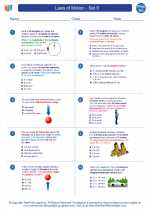Comets: Explained
Comets are small celestial bodies that orbit the Sun. They are composed of ice, dust, and rocky particles, and are often referred to as "dirty snowballs" or "icy mudballs." Comets are known for their bright, glowing tails that can be seen from Earth when they come close to the Sun.
Composition of Comets
Comets are primarily made up of frozen water, carbon dioxide, ammonia, and methane, along with dust and rocky particles. When a comet approaches the Sun, the heat causes these volatile substances to vaporize, creating a glowing coma (the comet's atmosphere) and a characteristic tail.
Orbit and Movement
Comets have highly elliptical orbits, which means they can spend most of their time in the distant reaches of the solar system before making a close approach to the Sun. As they approach the Sun, the solar radiation and solar wind cause the material in the comet to be blown away, forming the bright tail that points away from the Sun.
Study Guide
To understand comets thoroughly, consider studying the following key areas:
- Structure and Composition: Explore the internal structure of comets and the composition of their nuclei, as well as the nature of their tails and comas.
- Orbital Dynamics: Investigate the orbital paths of comets, including their perihelion (closest approach to the Sun) and aphelion (farthest distance from the Sun).
- Observation and Study: Learn about the techniques used to observe and study comets, including ground-based telescopes, space missions, and spectroscopic analysis.
- Historical Significance: Explore the historical significance of comets in various cultures and civilizations, as well as the scientific understanding of comets throughout history.
- Impact and Importance: Understand the impact of comets on the solar system, including their potential role in the delivery of water and organic molecules to Earth, as well as their potential as impact hazards.
By delving into these areas, you can gain a comprehensive understanding of comets and their significance in the realm of astronomy and astrophysics.
.◂Physics Worksheets and Study Guides High School. Laws of Motion - Set II

 Worksheet/Answer key
Worksheet/Answer key
 Worksheet/Answer key
Worksheet/Answer key
